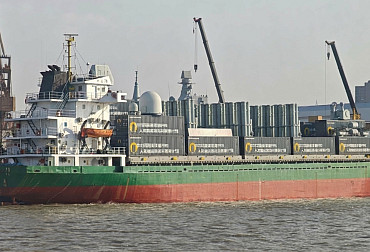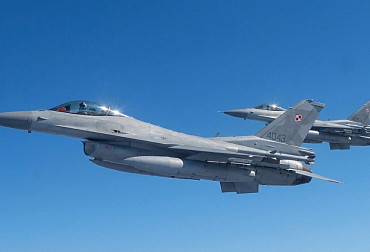Air superiority: Key pillar of successful military operations in the 21st century
The dynamics of technological development, new forms of threats, and the changing geopolitical reality are forcing us to seek answers to questions that were not on the agenda just a few years ago. This year, the Future Air Force Conference became a place where these answers began to emerge—not only in presentations and panel discussions, but also in practical demonstrations and informal meetings.

Future Air Force Conference: When the whole world looks to the future of aviation
This year's Future Air Force Conference was attended by nearly 200 experts and representatives from 34 countries around the world, as well as representatives from NATO, namely the JAPCC (Joint Air Power Competence Center) and NFTE (NATO Flight Training Europe). The conference thus confirmed its international significance and ability to attract key figures from the aviation and defense sectors.

Over the two-day event, more than 20 presentations were given, covering current and future challenges in the development of air force capabilities, interoperability between air forces (not only within the Alliance), and technological innovations. Alongside senior air force officials and experts on aircrew training, representatives of the defense industry also spoke, introducing participants to ways of making air training more effective. It was clear that the discussions were not limited to theory. The presentations were based on specific experiences from recent operations and offered practical insights into the transformation of air forces, the integration of new technologies, and the implementation of organizational changes required by the current security situation.

A traditional part of the program was the commanders' panel. This year, for the first time in the history of the Future Air Force Conference, representatives of the Finnish Air Force — Chief of Staff Brigadier General Aki Juhani Puustinen — and the Indian Air Force — Air Marshal P. K. Vohra, Commander of the Air Academy — were present. These two distinguished guests were joined by a representative of the Ghanaian Air Force, ACDRE Kwabena Kissiadu Manukure Atiemo.

Participants were treated to two surprises during the conference. Just before the conference, NFTE completed the accreditation process for the Czech aviation training center of the state-owned company LOM PRAHA in Pardubice. The accreditation was ceremoniously presented to representatives of LOM PRAHA by NFTE representative Meirion Roscoe, Technical Staff Officer, who also gave a very interesting lecture.

The second day brought a surprise and significantly revived the program with General Todd D. Walters, former SACEUR, who appeared as a guest of honor. His more than thirty-minute presentation, in which he assessed the current security situation and shared his ideas on the role of air forces in multi-domain operations, was undoubtedly one of the most interesting presentations.

Industry Day: Premiere that set the bar high
A new feature of this year's conference was Industry Day. For the first time, the defense industry was given space to present the latest technologies and systems not only in the form of presentations, but also through static and flight demonstrations. This format was met with an extremely positive response – participants appreciated the opportunity to combine theoretical discussion with practical demonstrations of capabilities. Aero Vodochody and LOM PRAHA made their debut here, presenting participants with a comprehensive demonstration of Live Virtual Constructive training.
LVC training is an advanced approach to simulation and training of armed forces, combining elements of real training (in this case demonstrated by the L-39 Skyfox training aircraft), virtual training (L-39 Skyfox simulator), and a constructive environment.

This system allows units to train together in realistic scenarios, even if participants are located in different places and environments. Industry Day showed that the future of air forces cannot be shaped without close cooperation between the military and industry.
Networking with added value
The accompanying program was also a strong point of the conference. The highlight was a gala evening at the Military History Institute. The historical backdrop and the participation of key representatives of the Ministry of Defense and the Air Force Command underscored the festive nature of the event and created an environment where formal discussions naturally turned into personal conversations and informal networking.
Conference message
This year's Future Air Force Conference clearly demonstrated that it is not just a series of lectures and panel discussions. It is a platform where military experience, alliance perspectives, and industrial innovation come together. The result is a space where concrete visions and realistic projects are born.
With participants from almost all over the world, prestigious guests, and the successful premiere of Industry Day, the conference has taken another step forward—and confirmed that the discussion about the future of the air force is taking place right here in Prague.
The Future Air Force Conference 2025 has thus confirmed its position as one of the most important professional platforms of its kind, connecting military, alliance, and industrial partners with the aim of finding common solutions for the future of air forces.
























